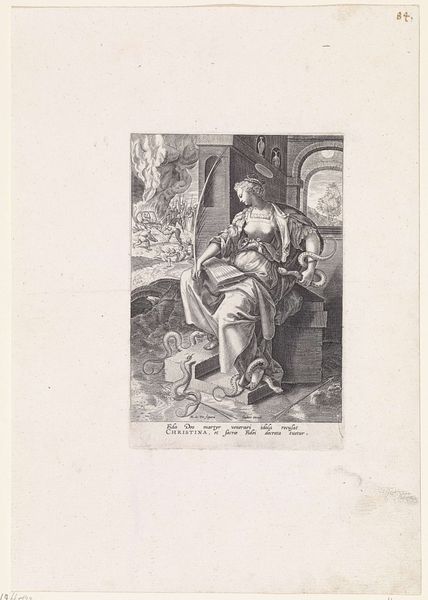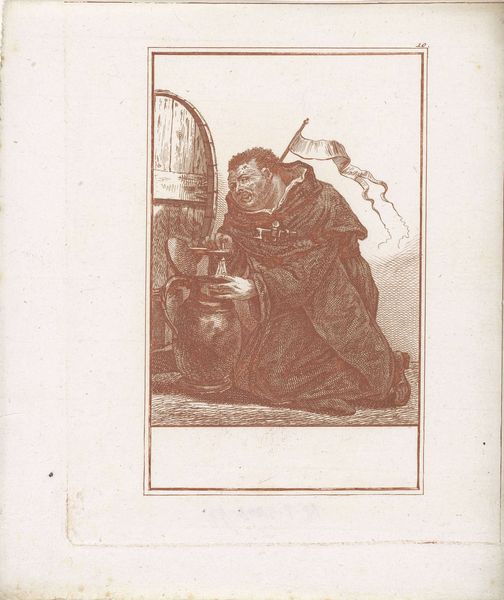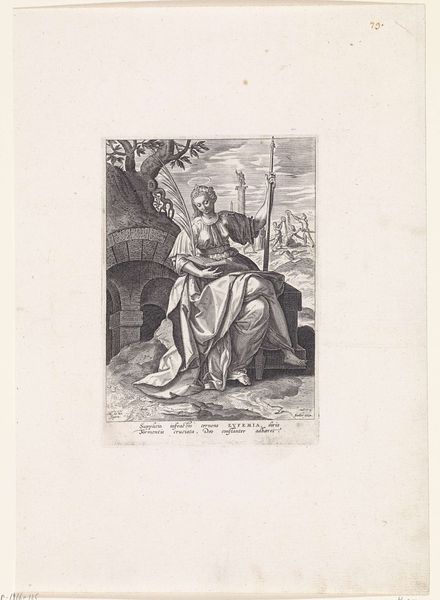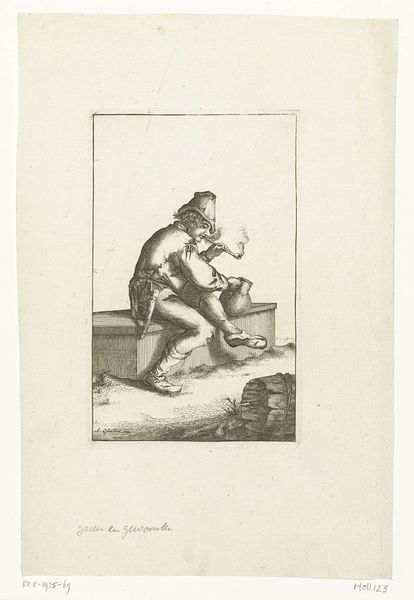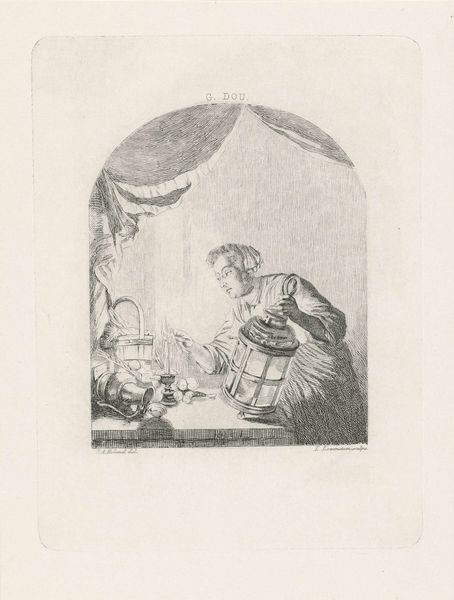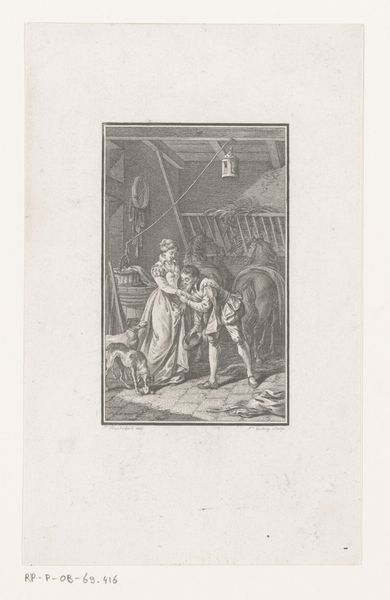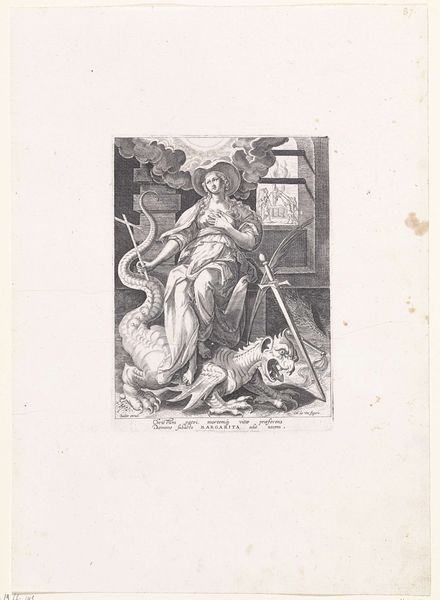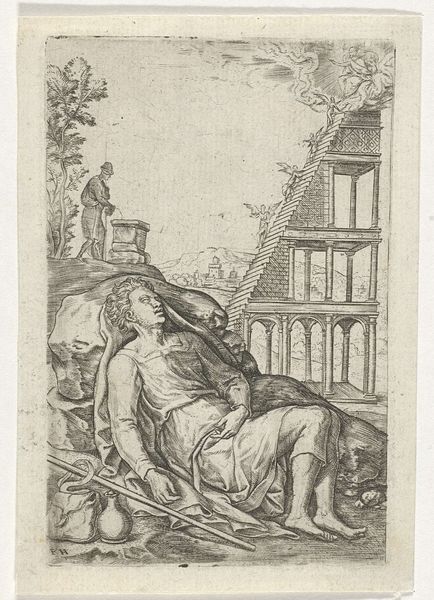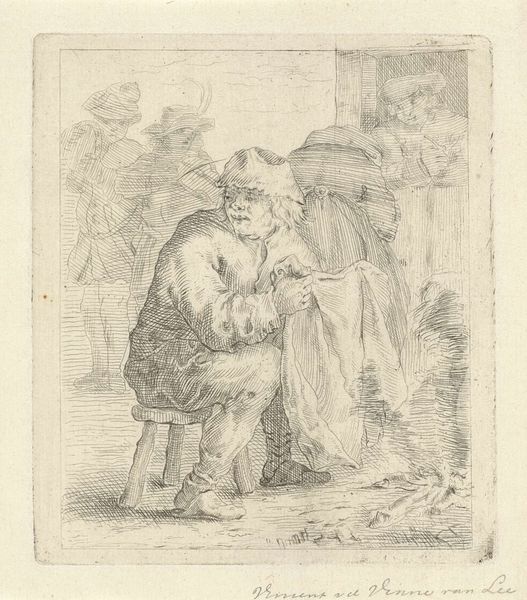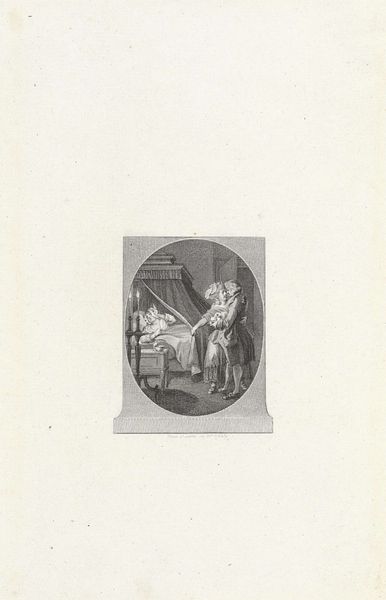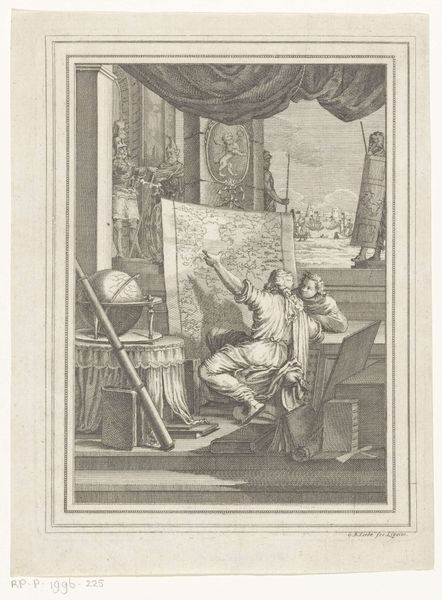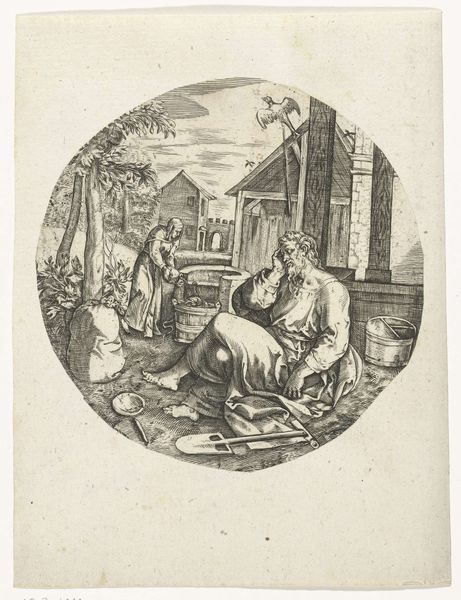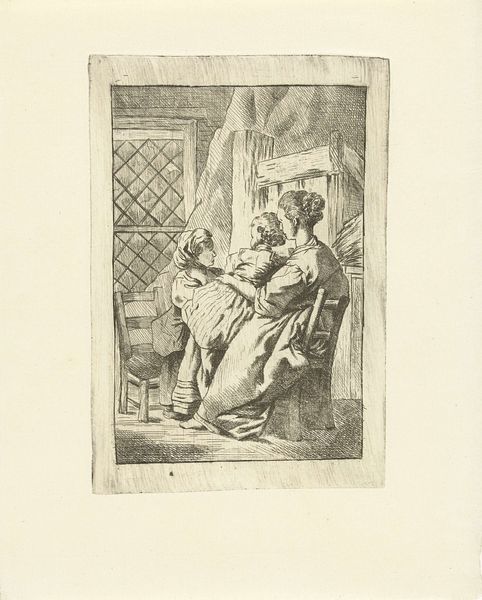
print, engraving
# print
#
mannerism
#
figuration
#
history-painting
#
engraving
Dimensions: height 187 mm, width 134 mm
Copyright: Rijks Museum: Open Domain
Curator: This is "Heilige Dorothea," a compelling engraving crafted between 1583 and 1587 by Johann Sadeler I. We find this piece housed right here at the Rijksmuseum. Editor: It's arresting, isn't it? The somber tone, the delicate detail given the medium. She looks resigned, but powerful. I see so much tension here. Curator: Indeed. Sadeler was working within the Mannerist style. It's worth considering how the socio-political climate of the late 16th century shaped this representation of Saint Dorothea. The way Sadeler presents her engages directly with the prevailing artistic trends of the era and the way martyred saints were portrayed at the time. Editor: Precisely, and let's delve into that narrative. Dorothea, the Christian martyr, almost serenely awaiting her fate. Yet look at what she cradles – fruits and flowers, a symbolic offering of paradise. It juxtaposes so heavily with the execution occurring in the background, framing this as an intersectional narrative where her identity and the violent politics of the time collide. Curator: Her serene expression speaks to the spiritual narratives that defined the public role of religious imagery. The surrounding iconography–the sword, the open book–frames Dorothea’s image within existing artistic conventions, yet emphasizes specific attributes related to her faith and legend. Editor: And let’s not overlook how the engraving technique emphasizes line and form. The meticulous detailing really reinforces the thematic concerns around piety, sacrifice, but it’s equally engaged with gender. The softness of her face, countered by the steel of the sword— it challenges perceptions and is visually striking. Curator: Her martyrdom served as a powerful symbol in a society grappling with religious reformation and political upheaval. Prints like these were circulated widely and shaped the visual culture of the era. Editor: Exactly, shaping not only devotion but, importantly, discourse around authority and the feminine divine. The work isn't merely decorative; it’s actively constructing meanings that are steeped in conflict. Considering its impact is truly fascinating. Curator: Examining art through a historical lens offers us clarity about this image’s purpose and function. Editor: But placing the work in our current context, allowing theory and lived experience to guide our interaction, really magnifies what Johann Sadeler so subtly captured in 16th century. Curator: Thank you for those reflections.
Comments
No comments
Be the first to comment and join the conversation on the ultimate creative platform.
